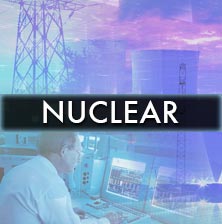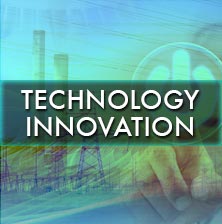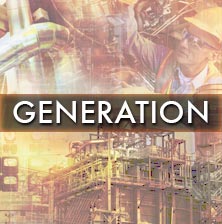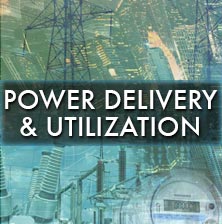The following is a small selection of items recently published by EPRI. To view complete lists of your company-funded research reports, updates, software, training announcements, and other program deliverables, log in at www.epri.com and go to Program Cockpits.

Stress corrosion cracking—a type of degradation in steam generator tubing in nuclear plants—can be linked to the presence of lead. One possible approach to mitigate this degradation involves adding to the plant’s secondary water chemicals that interfere with lead. In this study, researchers tested the effectiveness of several such “inhibitor” chemicals.

This study examines combining bendable concrete (also known as engineered cementitious composite) and high-strength concrete to construct taller wind turbine towers with enhanced durability. It discusses development, characterization, and selection of materials and quantifies the economic advantages.

Stress corrosion cracking is a type of degradation that can affect components in nuclear plants. Peening (also known as surface stress improvement) is a technology that can help mitigate this degradation by modifying the stress on metal surfaces. These guidelines are intended to help U.S. nuclear utilities prepare technical specifications for peening in three areas: (1) reactor pressure vessel top head penetration nozzles, 2) Alloy 82/182 dissimilar metal butt welds in primary system piping, and 3) reactor vessel bottom-mounted nozzles.

This report discusses results of field and outdoor laboratory tests in 2011 and 2012 to evaluate two technologies to measure conductor temperatures during LiDAR field surveys of transmission lines. (LiDAR measures distances by illuminating targets with laser light.) Accurate temperature measurement is vital for developing accurate models of transmission lines to enable maximum power flow.

This report discusses the results of a four-year EPRI effort under the U.S. Department of Energy SunShot Initiative to develop, lab-test, model, deploy, and field-test smart inverters with grid-support capabilities.

In February 2013, LaSalle County Generating Station Unit 2 experienced higher-than-expected iodine-131 airborne activity on the refuel floor during reactor vessel disassembly. To gain a better understanding of this event, researchers conducted a literature review on the various chemical forms of iodine and how each may behave under different plant operating and shutdown conditions. Based on this, they developed an analytic procedure to predict the potential for iodine release and reviewed LaSalle Unit 2 chemistry data to determine abnormalities that may have contributed to iodine-131 airborne activity.

U.S. researchers recently published a study that assesses the association between populations living near overhead power lines and childhood leukemia (“Childhood Leukemia and Distance to Power Lines in California: A Population-Based Control Study,” British Journal of Cancer). This EPRI report provides an overview of the study and discusses its strengths and limitations.

Effective, efficient evaluation of the grid impacts of distributed energy resources is a necessary aspect of distribution planning today. This report defines a method for New York State to analyze hosting capacity—the number and kilowatt capacity of distributed energy resources that distribution feeders can accommodate without adverse impacts to the grid’s power quality and reliability and without requiring the addition of new infrastructure.

This study examines wearable computer technology for application in the electric power industry through a literature review, product assessments, development of a prototype computer platform, and more.

For the past four years, EPRI has worked with automakers, energy companies, and the U.S. Department of Energy (DOE) to analyze the lifecycle impacts of various vehicle and fuel combinations. The resulting study (“Cradle-to-Grave Lifecycle Analysis of U.S. Light-Duty Vehicle-Fuel Pathways: A Greenhouse Gas Emissions and Economic Assessment of Current (2015) and Future (2025-2030) Technologies”) uses DOE models with assumptions modified by stakeholder input to describe the emissions and costs of conventional vehicles, hybrid electric vehicles, plug-in electric vehicles, and hydrogen fuel cell vehicles. This brief report highlights some of the study’s key findings.

With more stringent U.S. Environmental Protection Agency limits on selenium in power plant flue gas desulfurization wastewater, it is desirable to monitor concentrations on a continuous or semi-continuous basis. Several vendors are commercializing selenium monitoring devices but field experience is limited. In this study, EPRI installed and operated two selenium analyzers—one from Aqua Metrology Systems and the other from PS Analytical—in the treated effluent of a full-scale wet flue gas desulfurization system. The objective was to evaluate their accuracy and operations and maintenance requirements.

This paper examines the state of the technology of flow batteries—electrochemical devices that store electrical energy in liquid electrolytes that are pumped through a stationary stack. The research draws on requests to more than 20 commercial flow battery companies for information on their products, chemistry, and strategy to overcome limitations. Researchers also conducted phone interviews with the companies. The report covers basic operation of flow batteries, advantages and challenges, and adoption trends.